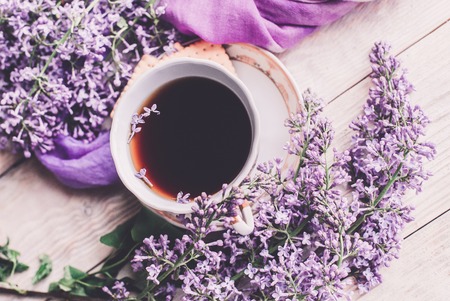1. Understanding the British Climate and Its Impact on Wellbeing
The United Kingdom is renowned for its dynamic weather patterns, with each season bringing distinct shifts in temperature, humidity, and daylight hours. Unlike climates that experience prolonged periods of sunshine or cold, the British Isles are characterised by frequent changes—often within a single day. Winters tend to be damp and grey, with limited sunlight and high humidity, while summers offer milder warmth and longer daylight but can still be punctuated by unpredictable rain showers and cooler spells. Spring and autumn transition gradually, marked by fluctuating temperatures and shifting light quality.
These seasonal variations significantly influence mood, comfort, and overall wellness among UK residents. Prolonged periods of low light during winter can contribute to reduced energy levels and seasonal affective disorder (SAD), while high humidity may impact respiratory comfort. Conversely, the extended daylight of summer months can boost mood and support more active lifestyles. Understanding these climatic nuances is essential for tailoring aromatherapy practices throughout the year, ensuring that blends and rituals align with both the physiological and emotional needs shaped by Britain’s ever-changing weather.
2. Fundamentals of Aromatherapy for the UK Lifestyle
Aromatherapy, rooted in the therapeutic use of essential oils, has become an increasingly popular practice across Britain, seamlessly integrating into both domestic and professional environments. Understanding its core principles is essential for safe and effective use, particularly when adapting blends and practices to suit the unique rhythms and demands of British life.
Key Principles of Aromatherapy in British Routines
The British lifestyle, marked by variable weather and a focus on work-life balance, benefits from aromatherapy’s adaptable nature. Essential oils are commonly used to address seasonal discomforts—such as low mood during darker months or allergies in spring—and to foster a calming or invigorating atmosphere at home and in workplaces. The foundational principle is to select oils that align with personal needs while considering climate and local sensitivities.
Safety Guidelines for Home and Workplace Use
| Guideline | Description | UK Considerations |
|---|---|---|
| Dilution | Always dilute essential oils before topical use. | Popular carrier oils include sweet almond and grapeseed, widely available in UK health shops. |
| Patching Testing | Test diluted oils on a small area of skin first. | Recommended especially for sensitive or fair British skin types. |
| Ventilation | Ensure adequate airflow when diffusing oils. | Important in typically well-insulated British homes and offices. |
| Pets & Children | Keep oils out of reach and avoid certain oils around pets or young children. | Cats and dogs are common UK pets; avoid eucalyptus, tea tree, and citrus oils near them. |
| Storage | Store oils in cool, dark places away from sunlight. | The unpredictable British climate necessitates robust storage solutions to prevent spoilage. |
Common Methods of Use in Local Settings
The most prevalent methods in British homes include:
- Diffusion: Electric diffusers are favoured for consistent aroma delivery, especially during damp or cold months.
- Bath Blends: Adding a few drops to baths is a classic British approach to unwind after brisk days.
- Pillow Sprays: Lavender-based sprays support restful sleep, aligning with the UK’s emphasis on good sleep hygiene.
- Pulse Point Application: Rollerball blends are discreetly used at desks or during commutes on public transport.
- Cleansing Spritzes: Citrus or pine-based sprays refresh shared spaces, particularly valued in open-plan offices or family kitchens.
An evidence-based approach—selecting appropriate oils, applying safety guidelines, and choosing methods suited to daily routines—ensures that aromatherapy enhances wellbeing effectively within the context of the British climate and culture.

3. Essential Oils for Every British Season
The UK’s distinctive seasons call for aromatherapy solutions that are not only effective but also resonate with the local environment. By leveraging both scientific research and traditional British flora, it is possible to create seasonal essential oil blends that support wellbeing throughout the year.
Spring: Renew and Revitalise
British springs are characterised by dampness, fluctuating temperatures, and pollen surges. Data from Allergy UK shows a significant rise in hay fever cases between March and May. To counteract these challenges, lavender (Lavandula angustifolia), native to many British gardens, demonstrates antihistamine-like properties and can help reduce anxiety, as shown in a 2019 systematic review published in the journal Phytomedicine. Lemon (Citrus limon) offers antimicrobial benefits and a mood boost, while eucalyptus (Eucalyptus globulus), though not native but widely used in the UK, supports respiratory clarity—vital during pollen-heavy months.
Summer: Soothe and Cool
The British summer may bring brief heatwaves followed by rain, leading to increased humidity and occasional insect activity. According to Public Health England, heat-related illnesses are on the rise during the warmer months. Peppermint (Mentha piperita), cultivated across the UK, provides cooling relief and helps alleviate headaches, as supported by studies in the International Journal of Clinical Practice. Roman chamomile (Chamaemelum nobile), often found in traditional English meadows, calms skin irritations from sun exposure or insect bites. Lemongrass (Cymbopogon citratus), while not native but increasingly popular in British gardens, acts as a natural insect repellent according to evidence published by the European Medicines Agency.
Autumn: Ground and Balance
Autumn in Britain brings cooler weather, increased rainfall, and shorter days—factors linked with seasonal affective disorder (SAD) per NHS data. Bergamot (Citrus bergamia) essential oil has been shown in clinical trials (Frontiers in Pharmacology, 2017) to elevate mood and reduce stress levels. Cedarwood (Cedrus atlantica), reminiscent of woodland walks, supports grounding and emotional balance. Sage (Salvia officinalis), a traditional British herb, is noted for its immune-boosting properties—important as cold season begins.
Winter: Defend and Comfort
The British winter is marked by low sunlight, cold snaps, and high humidity indoors due to central heating. Research from the University of Reading links these conditions with increased incidence of colds and lowered mood. Pine (Pinus sylvestris), native to Scottish forests, offers antimicrobial action against airborne pathogens (Journal of Ethnopharmacology). Frankincense (Boswellia carterii) supports respiratory health and emotional resilience during darker months. Finally, ginger (Zingiber officinale), although not locally grown but widely used in British kitchens, warms the body and helps counteract winter lethargy—a benefit supported by findings published in Nutrients, 2020.
Sourcing Essential Oils Responsibly
Whenever possible, select essential oils derived from local or sustainably sourced botanicals to minimise environmental impact while supporting regional producers. This approach not only fosters ecological responsibility but also ensures oils align with the unique energy of each British season.
4. Tailored Seasonal Blends for Everyday Use
Adapting aromatherapy practices to the British climate means taking into account both the unique weather patterns and the seasonal shifts that characterise life across the UK. Below, discover a selection of ready-to-use aromatic blends specifically formulated for use in personal diffusers, baths, and massage oils. These recipes are designed to support wellbeing and comfort throughout the changing seasons, making use of essential oils commonly available in Britain.
Spring: Freshness & Renewal
| Application | Essential Oils | Ratio/Recipe |
|---|---|---|
| Diffuser | Lemon, Eucalyptus, Geranium | 3 drops Lemon, 2 drops Eucalyptus, 1 drop Geranium |
| Bath | Bergamot, Lavender | 2 drops Bergamot, 3 drops Lavender mixed with 1 tbsp carrier oil before adding to bathwater |
| Massage Oil | Peppermint, Rosemary | 2 drops Peppermint, 2 drops Rosemary per 10ml carrier oil |
Summer: Cooling & Uplifting
| Application | Essential Oils | Ratio/Recipe |
|---|---|---|
| Diffuser | Peppermint, Lemon, Spearmint | 2 drops Peppermint, 2 drops Lemon, 1 drop Spearmint |
| Bath | Cedarwood, Chamomile Roman | 2 drops Cedarwood, 3 drops Chamomile Roman with 1 tbsp carrier oil |
| Massage Oil | Eucalyptus, Grapefruit | 2 drops Eucalyptus, 3 drops Grapefruit per 10ml carrier oil |
Autumn: Grounding & Immune Supportive
| Application | Essential Oils | Ratio/Recipe |
|---|---|---|
| Diffuser | Sandalwood, Clove Bud, Sweet Orange | 2 drops Sandalwood, 1 drop Clove Bud, 2 drops Sweet Orange |
| Bath | Pine Needle, Frankincense | 2 drops Pine Needle, 3 drops Frankincense in 1 tbsp carrier oil added to bathwater |
| Massage Oil | Lavender, Ginger Root* | *Use ginger sparingly. 1 drop Ginger Root with 4 drops Lavender per 10ml carrier oil. |
Winter: Warming & Comforting Support
| Application | Essential Oils | Ratio/Recipe |
|---|---|---|
| Diffuser | Cinnamon Leaf*, Sweet Orange, Cardamom | *Cinnamon Leaf is potent—use only 1 drop with 3 drops Sweet Orange and 1 drop Cardamom |
| Bath | Pine Needle, Benzoin | 2 drops Pine Needle, 2 drops Benzoin (diluted in a tablespoon of carrier oil) |
| Massage Oil | Cedarwood Atlas, Marjoram | 2 drops Cedarwood Atlas, 2 drops Marjoram per 10ml carrier oil |
Aromatic Safety Tips for UK Users
- Avoid applying undiluted essential oils directly onto skin. Always dilute in a suitable carrier such as sweet almond or grapeseed oil.
- If using in a bath, blend essential oils thoroughly with a dispersant like full-fat milk or a carrier oil before adding to water.
- Certain oils (e.g., citrus) may increase photosensitivity; exercise caution during sunnier periods.
The Data-Driven Approach for British Conditions
The above blends are based on both traditional aromatherapeutic wisdom and scientific findings regarding mood enhancement and immune support aligned with British weather data. Consistent use of seasonally appropriate blends can help counteract common issues such as low energy during overcast winters or hay fever symptoms in spring.
5. Practical Integration: Aromatherapy in British Daily Life
Incorporating aromatherapy into everyday routines can be both straightforward and rewarding, especially when tailored to the rhythms of British life and climate. Here are practical strategies for weaving aromatherapy seamlessly into daily habits, enhancing wellbeing in a way that resonates with local culture.
Commuting: Calming Scents for Busy Journeys
The UK’s daily commute—whether by train, bus, or car—can be stressful, particularly during dark winter mornings or rainy evenings. Carrying a personal inhaler or a handkerchief infused with uplifting essential oils like bergamot or peppermint offers a discreet way to reduce stress and boost alertness. Lavender is another popular option for those seeking calm on crowded public transport, helping create a personal oasis amid the bustle.
Work-from-Home Days: Creating Focus and Comfort
With hybrid and remote work increasingly common across Britain, home offices have become sanctuaries of productivity. Diffusing rosemary or lemon essential oil in your workspace can help sharpen focus and lift your mood, especially during the darker months. For an afternoon pick-me-up, a blend of sweet orange and geranium can re-energise without resorting to more caffeine. These scents not only support concentration but also help demarcate work time from leisure in shared living spaces.
Traditional Celebrations: Enhancing Festive Atmospheres
British cultural events—from Christmas gatherings to Bonfire Night—offer unique opportunities to enrich the senses with seasonally inspired blends. For example, diffusing cinnamon, clove, and orange during winter festivities evokes warmth and nostalgia, while springtime occasions like Easter benefit from light floral notes such as chamomile and neroli. Tailoring blends to specific celebrations can foster connection and create memorable atmospheres for friends and family.
Everyday Wellbeing: Small Rituals for Big Impact
Integrating aromatherapy need not require dramatic changes; small rituals can yield significant benefits. Adding a few drops of eucalyptus to bathwater helps clear the airways after brisk walks on chilly days. Spritzing linen spray made with lavender before bedtime supports restful sleep—a boon during long winter nights. By aligning aromatherapy practices with typical British routines and seasonal shifts, individuals can experience tangible improvements in mood, resilience, and overall wellbeing.
6. Local Sourcing and Sustainability Considerations
As aromatherapy continues to flourish in the UK, it is increasingly important to consider the environmental impact of our essential oil choices and practices. Responsible sourcing starts with prioritising local producers who champion sustainable agricultural methods. By purchasing from British distilleries and growers, such as those in Norfolk or the Cotswolds, you support reduced transportation emissions and help sustain rural economies. Opting for locally grown lavender, chamomile, or mint not only ensures freshness but also strengthens the traceability of your oils—an essential factor in maintaining quality and safety.
Supporting Sustainable Practices
Seek out producers who use organic farming techniques, avoid harmful pesticides, and implement water conservation strategies. Many reputable UK suppliers now provide certifications or transparent information regarding their cultivation and extraction processes. Engaging directly with these businesses at farmer’s markets or through community-supported agriculture (CSA) schemes fosters a greater understanding of ethical production and allows for informed purchasing decisions.
Environmental Impact of Aromatherapy
Aromatherapy’s popularity has led to increased demand for certain botanicals, placing pressure on wild plant populations worldwide. To reduce your environmental footprint, consider using blends that feature abundant British flora instead of rare or endangered species. Additionally, practice mindful usage—dilute oils appropriately and avoid unnecessary waste by storing them correctly to prolong shelf life.
Community Engagement and Education
Participate in local workshops or online forums to learn more about sustainable aromatherapy. Sharing knowledge about responsible sourcing within your community not only amplifies positive environmental outcomes but also promotes a culture of conscious wellbeing rooted in British values of stewardship and respect for nature.
By making informed choices and supporting sustainable practices, you can enjoy the benefits of seasonal aromatherapy while contributing positively to both local communities and the environment—a truly holistic approach fitting for the British climate.


